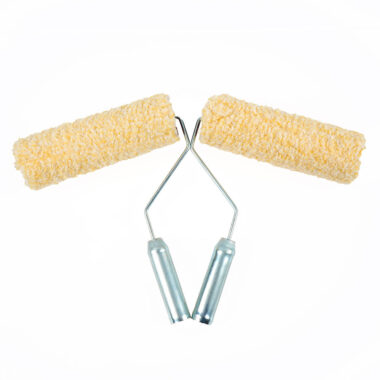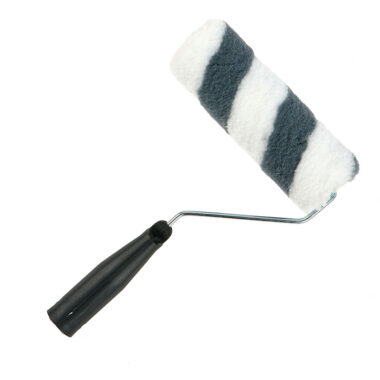🏭 Why Shedding Is a Critical Concern
For professional painters and contractors, few things are more frustrating than bristles left behind on freshly coated surfaces. Shedding reduces finish quality, increases rework costs, and damages brand reputation. For procurement managers, ensuring anti-shedding performance is not just a product detail—it’s a guarantee of end-user satisfaction.
🔩 Ferrule Construction: More Than Just Metal
The ferrule, the metal band that holds bristles in place, is often underestimated. Buyers should pay attention to:
-
Material choice: Stainless steel or copper resists rust better than tin-plate ferrules.
-
Wall thickness: Thicker ferrules provide stronger crimping and long-term stability.
-
Shape & finish: Precision-made ferrules prevent gaps where epoxy could weaken.
A high-quality ferrule directly reduces the risk of bristle loss.
🧪 Epoxy Setting: The Hidden Bond
Inside the ferrule, bristles are anchored with two-part epoxy resin. This is the invisible foundation of an anti-shedding brush. Key factors include:
-
Penetration depth: Bristles should be embedded deeply enough to resist pull tests.
-
Heat curing: Controlled curing ensures maximum bond strength.
-
Moisture resistance: High-grade epoxy prevents softening under wet conditions.
In procurement specs, it’s important to request epoxy-setting details for consistency across batches.
🔧 Crimping Process: Locking It All Together
Crimping presses the ferrule tightly onto the handle, further locking the bristles in place. Buyers should ask suppliers about:
-
Crimping pressure: Too light, and bristles loosen; too strong, and ferrules deform.
-
Double vs single crimp: Double crimping adds holding power, particularly for professional-grade brushes.
-
Automation level: Automated crimping lines reduce variance across bulk production.
📑 What Buyers Should Specify in Orders
To avoid customer complaints, buyers should outline:
-
Minimum pull test standards (e.g., X newtons)
-
Ferrule material and thickness requirements
-
Epoxy penetration depth and curing method
-
Crimping type (single or double)
These details ensure procurement teams receive consistent quality, not just low cost.
🔗 Reliable Supply Channels
For contractors and distributors, securing durable tools starts with the right partner. Many companies rely on a Paint Brush Supplier to maintain consistency across production runs.
When specific branding or product specs are required, collaborating with a Custom Paint Brushes Supplier allows buyers to integrate their own logos, packaging, and durability requirements without losing factory efficiency.
✅ Conclusion
Anti-shedding brushes are built on three pillars: ferrule strength, epoxy bonding, and precision crimping. For procurement teams, demanding transparency on these processes helps ensure each order performs as expected in the field. By working with the right supplier, buyers can protect their brand reputation and keep painters loyal.













